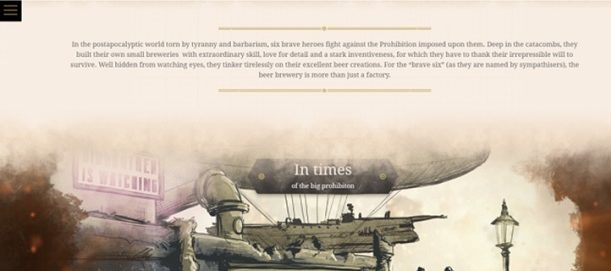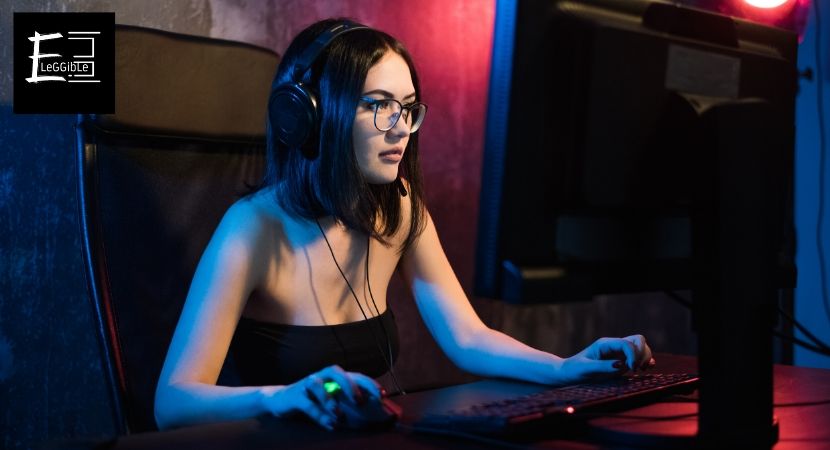Although web design trends may sometimes seem unpredictable, they often reflect people’s needs.
For instance, in the last few years, given that users spend more and more time on the internet, web designers ditched the use of flashy graphics, eye-catching colors, and in some cases, too many design elements in favor of a more minimalistic look.
Consequently, browsing the internet has become a more relaxing, enjoyable, and valuable experience.
Furthermore, design trends are often the result of the latest advancements in technology, allowing designers to experiment and bring up innovations in interaction, animation, and overall user experience.
Contents
Top 10 Web Design Trends for 2022
So, what does 2022 have in store for us? Let’s have a look.
#1 One-Page Websites
The less complex a website is, the more effective it can be. That’s why one-page sites will likely become increasingly popular in 2022.
First off, single-page websites allow companies to easily send a clear message and highlight a product’s key selling points.
Second, the lack of navigation options keeps users focused on what matters, leading to higher retention rates and increased conversions.
Third, one-page websites usually load quickly. Given that 53% of mobile visitors will abandon a webpage if it takes over three seconds to load, that’s a significant advantage.
Be careful, though. The lack of space can easily make your website look overwhelming. We’ve talked with some New York web design experts, and they suggest keeping things as simple as possible.
Avoid using too much text and let images speak for themselves instead. Also, as one-page websites typically take longer to scroll compared to regular ones, your CTA buttons may be easier to miss.
That said, make sure that they are in the users’ field of view. Placing them in an intuitive location, like at the top right portion of the screen, or making the buttons sticky might be a good idea.
#2 Scrollytelling
Think of scrollytelling as a subset of one-page websites. They allow designers to create a story that unfolds as the user scrolls further down the page. Consequently, the information is presented in an engaging, easy-to-digest manner. If done right, that is.
You wouldn’t want to make visitors feel like they’re reading through a book. But you wouldn’t want users to scroll through a blank website just to read a few paragraphs, either. Otherwise, the browsing experience will become tedious, frustrating, and probably drive your visitors away.
Again, visuals play a crucial role here. Use text to highlight key pieces of information and use graphics or images to expand on that information without cluttering the screen, much like in comic books.
You can also implement animations to spice things up a bit.

#3 Micro-animation
Speaking of animation, it will likely become a trend within itself. People usually have short attention spans. That’s one of the reasons why short-form videos, like on TikTok, exploded in popularity for the past few years.
But, unlike videos, most websites have static designs, meaning that catching and maintaining the visitors’ attention can be more difficult.
The fix?
Implement micro-animations! These take the form of small, dynamic designs for a website’s background. You can animate essential design elements, like CTAs, to grab attention and invite users to click on them.
Also, consider implementing micro-animations in the upper section of your website, so you’ll catch users’ attention as soon as they land on your web page.
That isn’t enough, though. Use contrasting colors to make these design elements stick out even more
#4 Parallax Scrolling
Parallax scrolling is a web design practice where the website’s background moves slower than its foreground, resulting in a 3D effect as users scroll down a web page.
Consequently, parallax scrolling adds a sense of depth and provides an immersive browsing experience, making it perfect for visual galleries and sites that focus on scrollytelling.
Although this trend is rising, parallax scrolling can either make or break your website. Given that this design technique involves heavy animations, your loading speed will likely take a hit.
Furthermore, parallax scrolling is not a suitable option for content-heavy websites. Sure the effect might look great for a while, but the more a user scrolls through a web page, the more cumbersome and frustrating the process will be.
Lastly, a website that uses parallax scrolling on desktops will not look the same on mobile devices. Consequently, designers may spend quite a bit of time making adjustments.
In other words, take some time to determine whether your website might be suitable for this design technique before jumping into it.
#5 Brutalism
Brutalism is an architectural style that surfaced in the 1950s. The name is derived from the French phrase “Beton brut,” meaning raw concrete.
In other words, brutalist buildings were bare-bones and strictly focused on utility. But despite their simplicity and raw appearance, brutalist structures were bold and stuck out like a sore thumb.
That’s why this architectural style is making its way into web design. Brutalist websites are stripped down to their basic elements, using default computer fonts, simple backgrounds, asymmetrical layouts, and web-safe colors.
In other words, brutalist sites looked at conventional design and took a 180-degree turn, giving them a simple yet bold and distinctive look.

#6 Exposed Grids
In web design, grid lines act as the skeleton of a website. They are used to draw the border between different web page sections, structure content, so it’s organized and optimized for a better user experience.
Although grid lines were not intended to be visible from the users’ perspective, designers seem to make them an integral part of a website’s appearance by revealing the borders.
That’s because having a clear boundary makes it easier for users to differentiate a piece of content from the other, thus improving the scannability of a website. Not only that, but exposed grid lines also allow room for more design elements without cluttering the site.

#7 Split-Screen Layouts
Like exposed grid lines, split-screen layouts also draw the border between different design elements.
But in this case, the web page is usually divided into two or three parts, making it a good choice for less content-heavy websites.
You can use a split-screen layout to provide users with a solid visual experience, give visitors a choice simple regarding what they want to click on next, easily highlight CTAs, and even promote multiple products at once without cluttering your web page.
But remember to use contrasting colors to distinguish the sections and give your design a little extra oomph.

#8 Black and White Color Schemes
As simple as they may be, black and white color schemes are very versatile. You can apply them in logos, backgrounds, icons, photos, and more, yet your website’s design will still look stunning.
Not to mention that this color scheme is easy on the eyes and provides a perfect contrast between design elements.
This doesn’t mean that black and white works for every brand, though. This color scheme is best suited for luxury brands, as it evokes elegance and power.
That said, consult with a branding agency and figure out what colors describe your brand and how you can implement them into your website beforehand.

#9 Interactive Design
In web design, grabbing attention and crafting a memorable experience is the name of the game. But colorful images or animations might not always cut the deal.
Web designers are now looking for methods to make users interact with websites in as many ways as possible.
Besides scrolling, users can drag, swipe or click with specific design elements to trigger certain animations or reveal hidden parts of the web page.
In other words, websites start to feel more like mini-games. This encourages visitors to keep poking around the site, maintaining their attention, and ultimately providing a unique browsing experience.
#10 Retro Design
Taking design cues back from the past and adding a modern touch to them seems to be taking the world by storm. This design style is adopted across various industries, including fashion and even car brands.
Web design makes no exception. Web designers started to take inspiration from the early days of the internet and combine these aesthetics with modern design elements, giving websites a nostalgic yet refreshing look.

Eleggible’s Final Words
All in all, it looks like 2022 has a lot in store for the web design industry.
Designers will emphasize making the browsing experience as interactive as possible by implementing various animations, parallax scrolling, etc.
Simplicity will also be more important than ever, as one-page websites, exposed grid lines, split-screen layouts, and simple color schemes seem to rise in popularity.

